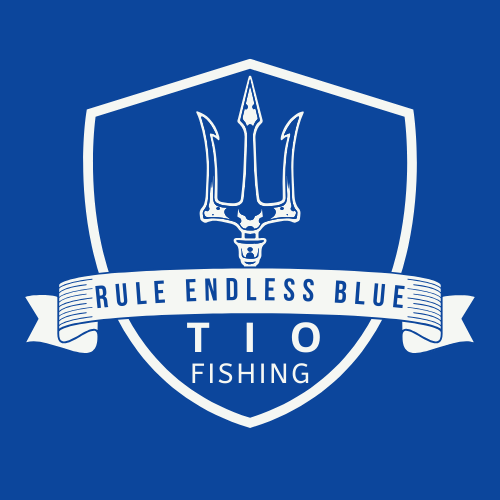
🔰Shore Jigging: A Beginner's Guide to NZ
Share to others
Introduction
Shore jigging is a fishing forms of fishing that involves casting the weighted jigs from the shore and retrieving them with a rhythmic jigging motion. It's a simple yet effective technique that can target a wide variety of fish, from hard-fighting pelagic species like kingfish and kahwai to bottom-dwellers like the gurnard and snapper.
What is Shore Jigging?
Shore jigging is a relatively straightforward fishing technique that doesn't require a boat. You can do it from any shore-based location with access to open water, such as piers, jetties, beaches, and rocky outcrops. All you need is a sturdy rod and reel, a selection of jigs, and some basic knowledge of how to jig.
Why Choose Shore Jigging?
Shore jigging offers several advantages over other fishing methods, especially for beginners:
- Accessibility: You don't need a boat, making it a more affordable and accessible way to get started with saltwater fishing.
- Simplicity: The technique is relatively easy to learn, even for complete novices.
- Variety: Shore jigs can target a wide range of fish species, making it an exciting and versatile fishing method.
- Exercise: Jigging requires some physical effort, providing a good workout while you fish
Classifications
By Tackle Weight
- Super Light Shore Jigging: casting weight between 10-20g, PE#1 and below
- Light Shore Jigging: casting weight between 20-60g, PE#1-2
- Shore Jigging: lure weight 60g and above, PE#2.5 and over
This is just a most common shore jigging classification by the tackle weight. Some suppliers or anglers might group them slightly different.
By Method
- Fast Pitch Shore Jigging: Often referred to as shore jigging, this method involves fast pitching or medium-speed pitching actions, usually done in areas with a good vertical drop field like rocks or jetties.
- Shore Slow Jigging: The rod action for shore slow jigging is slow, bending to a 5-5 ratio when loading. This method is akin to slow pitch jigging on a boat, but adapted for the shore using slow jigs.
- Surf Jigging: Utilize a lengthy casting rod, minimum 10' (3m), to cast the jig over surf breaks. Anglers can move along the beach while casting, also referred to as 'Run N Gun'.
- Lake Shore Jigging: a unique way of shore jigging to catch freshwater species.

Snapper caught on shore slow jigging with Little Jack Metal Adict Type 06
Getting Started with Shore Jigging
If you're new to shore jigging, here are a few essential things to get you started:
- Rod and Reel: Choose a sturdy rod and reel that can handle the weight of your jigs and the power of the fish you're targeting. Reel size can go from 2000 to 14000.
- Jigs: Jigs are the lures you'll be using to attract fish. They come in various shapes, sizes, and weights. Start with a selection of jigs in different weights to target different depths and fish species. Choose the jigs to suit your shore jigging method which mentioned before.
- Line: Braided line is the best choice for shore jigging due to its strength and thin diameter.
- Leader: Use a fluorocarbon leader or nylon leader are both good for shore jigging, to add abrasion resistance and prevent your line from being bitten off by fish. Replace the leader immediately if seen any damage on lines
- Knot: Best to use FG knot for line to line, chain knot for terminals. FG knot balances knot size, strength, and time. Chain knot is easy, strong, and preserves leader strength with no slipping.
- Terminals: The split ring and solid ring combo is superior for securing the lure and hook compared to snaps, and it offers the most compact size. It is recommended to always use this combo over any other.
- Landing Net or Gaff: Always prepare a landing equipment with you to minimum the chance to lose fish
- Life Saving Devices: Helmet, knee guard, satellite beacon, cell phone and most importantly, the life jacket.
Basic Jigging Techniques
Once you have your gear, it's time to learn the basic jigging technique:
- Cast your jig out as far as you can, or you know where the fish is.
- Let the jig sink to the desired depth.
- Begin jigging by raising your rod tip sharply and then lowering it with a slow, controlled motion. This will impart a darting, erratic action to your jig.
- Vary the speed and height of your jigs to see what attracts fish.
- When you feel a bite, set the hook firmly and reel the fish in.
Shore Jigging Tips for Beginners
- Start in calm conditions and progress to rougher water as you gain experience.
- Go with experienced shore angler and always wear safety devices.
- Learn about the different fish species in your area and their preferred habitats.
- Tie your knots securely and double-check them before each cast.
- Practice casting in the field to polish your skills.
- Be patient and persistent. It takes time and practice to become a successful shore jigger.
Shore jigging is a fun and rewarding fishing technique that can be enjoyed by anglers of all skill levels. With its accessibility, simplicity, and variety, it's a great way to get started with saltwater fishing or add a new dimension to your existing fishing skills. So grab your rod and reel, head to the shore, and give shore jigging a try!

The snapper was caught on shore jigging fast pitch actions









